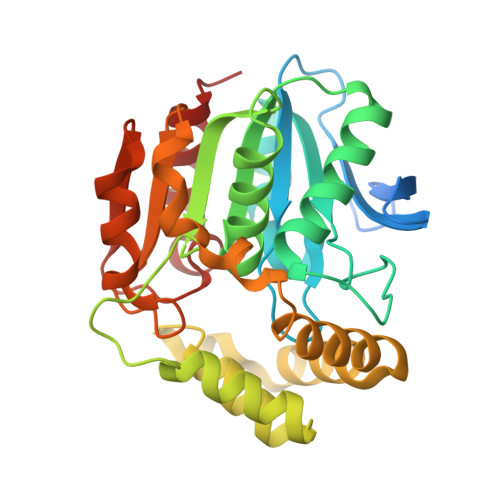Structure of Hsad, a Steroid-Degrading Hydrolase, from Mycobacterium Tuberculosis.
Lack, N., Lowe, E.D., Liu, J., Eltis, L.D., Noble, M.E.M., Sim, E., Westwood, I.M.(2008) Acta Crystallogr Sect F Struct Biol Cryst Commun 64: 2
- PubMed: 18097091
- DOI: https://doi.org/10.1107/S1744309107065931
- Primary Citation of Related Structures:
2VF2 - PubMed Abstract:
Tuberculosis is a major cause of death worldwide. Understanding of the pathogenicity of Mycobacterium tuberculosis has been advanced by gene analysis and has led to the identification of genes that are important for intracellular survival in macrophages. One of these genes encodes HsaD, a meta-cleavage product (MCP) hydrolase that catalyzes the hydrolytic cleavage of a carbon-carbon bond in cholesterol metabolism. This paper describes the production of HsaD as a recombinant protein and, following crystallization, the determination of its three-dimensional structure to 2.35 A resolution by X-ray crystallography at the Diamond Light Source in Oxfordshire, England. To the authors' knowledge, this study constitutes the first report of a structure determined at the new synchrotron facility. The volume of the active-site cleft of the HsaD enzyme is more than double the corresponding active-site volumes of related MCP hydrolases involved in the catabolism of aromatic compounds, consistent with the specificity of HsaD for steroids such as cholesterol. Knowledge of the structure of the enzyme facilitates the design of inhibitors.
Organizational Affiliation:
Department of Pharmacology, University of Oxford, Mansfield Road, Oxford OX1 3QT, England.
















